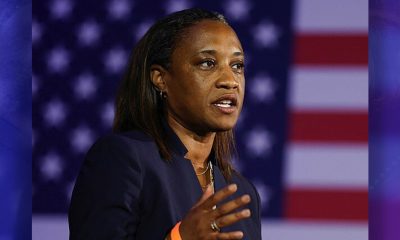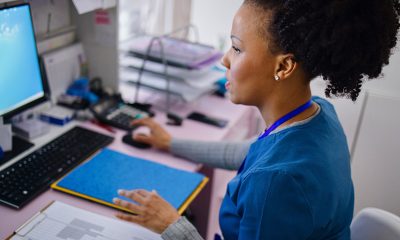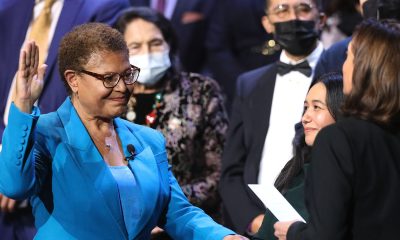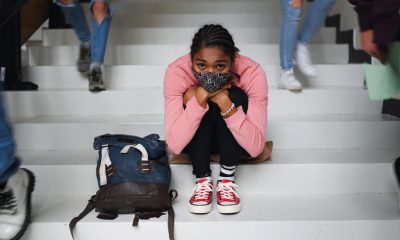Coronavirus
Officials Urge Black Community to Take COVID Shot
The number of cases in California dropped by 31% over 14 days leading up to January 22, according to the New York Times California Coronavirus Map and Case Count. The most recent peak in California was January 12 with almost 46,000 cases reported that day. On January 22, California reported about 25,000 new cases, almost half the number of cases reported 10 days earlier.
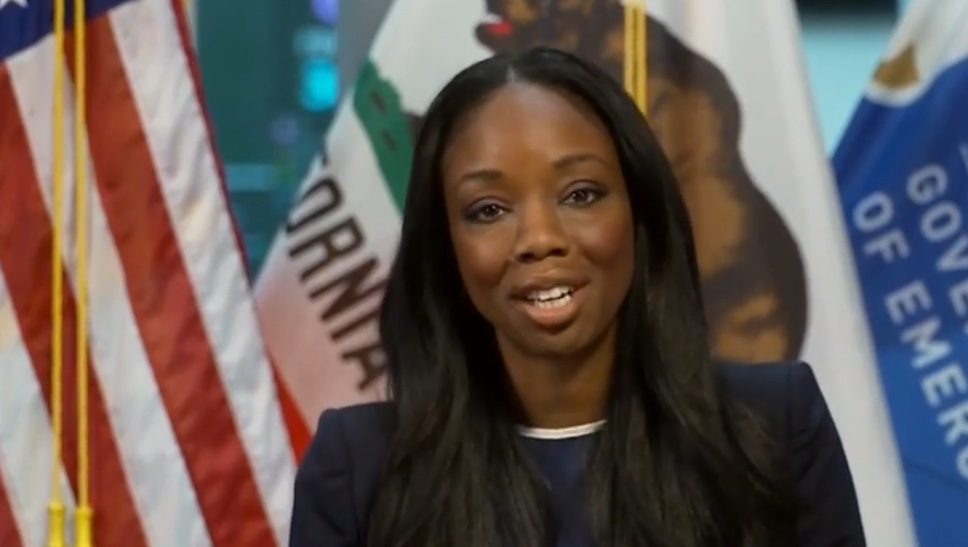
COVID-19 hospitalizations are starting to decrease in California, but that decline does not mean the pandemic is over, state health officials warn.
The number of cases in California dropped by 31% over 14 days leading up to January 22, according to the New York Times California Coronavirus Map and Case Count. The most recent peak in California was January 12 with almost 46,000 cases reported that day. On January 22, California reported about 25,000 new cases, almost half the number of cases reported 10 days earlier.
Health professionals representing “Vaccinate All 58,” a statewide vaccine safety and equity campaign Gov. Gavin Newsom launched, joined a Zoom press briefing with California Black Media organized in partnership with the Center at Sierra Health Foundation.
The event was held to discuss the next steps for distribution of the vaccine. The news conference also addressed changes that must be made — and misconceptions that must be disproved — to encourage a large cross section of reluctant African Americans to feel comfortable enough to take the vaccine.
“We have stepped up our support to hospitals, and we are saving lives,” California Surgeon General Dr. Nadine Burke Harris said at the briefing. “And we are optimistic that this curve is flattening and that the pace of vaccination is accelerating. We will get through this together.”
Part of getting through the pandemic together is for everyone to get vaccinated, Burke Harris explained.
“Our big goal is to turn vaccines into vaccinations,” she said. “So as our state continues to ramp up the rollout of our vaccines, we are continually committed to a fair and equitable allocation and distribution process. Equity has been central to California’s vaccine strategy.”
Equitable distribution has proven to be difficult. In a study conducted last year by The Undefeated and the Kaiser Family Foundation (KFF), half of Black U.S. adults surveyed said they are not planning to take the vaccine. Several other independent surveys have echoed that report’s findings. This prompted the California Dept. of Public Health (CDPH) to turn to community partnerships to build trust of the vaccine in California’s African American communities.
“We are partnering with 160 or so community-based organizations,” CDPH spokesperson Darrel Ng said. “We’re not quite ready to announce them yet, but they will be all over the state.”
Speakers participating in the briefing said outreach will be conducted through local organizations, including nonprofits and churches. Shantay R. Davies-Balch, president and CEO of the BLACK Wellness and Prosperity Center, described one recent effort.
She said a survey was held in the Fresno community to obtain data on how to move forward with programming that will be effective in raising awareness about the COVID-19 vaccine.
Burke Harris said the state is laser-focusing its efforts to reach communities that are disproportionately impacted by COVID-19, particularly Blacks and Latinos.
In Los Angeles, Mayor Eric Garcetti, County Supervisor Holly Mitchell and two city councilmen representing South Los Angeles held a conference at St. John’s Well Child & Family Center to encourage those distrustful of the vaccine to get vaccinated, especially since coronavirus infections disproportionately affect the South L.A. community, made up predominantly of Black and Latino residents.
Currently, in the state of California, vaccines have been distributed to healthcare providers and are now available to adults 65 and older. Soon, the state will launch a website where people can register with a new system that will notify them when they are eligible to receive the vaccine.
Regarding the vaccine’s safety, Dr. Elaine Batchlor, CEO of Martin Luther King Jr Community Hospital in Los Angeles County, explained that both the Pfizer-BioNTech and Moderna vaccines went through various trials and have been authorized by the Food and Drug Administration.
She also explained that the vaccine trials incorporated a diverse pool of people, including communities of color and older adults. She noted that an African American woman, Dr. Kissmekia Corbett, was one of the leading researchers on the Moderna vaccine.
“I know that that many people in our community are hesitant and worried about safety, so I want to stress that these vaccines have been held to the same safety standards as all vaccines,” she said.
The vaccines both require two doses. The doses of the Moderna vaccine must be given 28 days apart and the Pfizer vaccine must be given 21 days apart. When the vaccine is available to the broader public, people will be able to receive the vaccine from their primary care provider. If someone does not have a primary care provider, the County Dept. of Public Health will direct them to the nearest testing center that administers the vaccine.
Davies-Balch noted that “Vaccinate all 58” is working to ensure that the vaccination clinics are accessible to everyone. But the date on which the vaccine will be available to everyone is still not known.
In the meantime, Burke Harris urged people to continue to follow the “four w’s”: wear a mask, wash hands, watch your distance and wait to see your friends and loved ones.
Even those who get vaccinated must follow physical distancing protocols because of the uncertainty around transmission, the experts say. Although the vaccine prevents those infected from getting ill, there are still studies being conducted to see if it prevents transmission. This means that someone who has been vaccinated could possibly carry the virus to someone who hasn’t been, exposing them to COVID-19. Although Batchlor believes the vaccination prevents transmission, she explained that data still needs to be supplied to support that theory.
For now, the goal is to swiftly administer as many vaccinations as possible, she said.
“Once we reach community immunity, we will be ready to throw all of our masks in the trash and go back to our normal activities and interactions,” Batchlor added.
Alameda County
After Years of Working Remotely, Oakland Requires All City Employees to Return to Office by April 7
City Administrator Jestin Johnson recently told city unions that he is ending Oakland’s telecommuting program. The new policy will require employees to come to work at least four days a week. These new regulations go into effect on Feb. 18 for non-union department heads, assistant and deputy directors, managers, and supervisors. All other employees must be back at work by April 7.
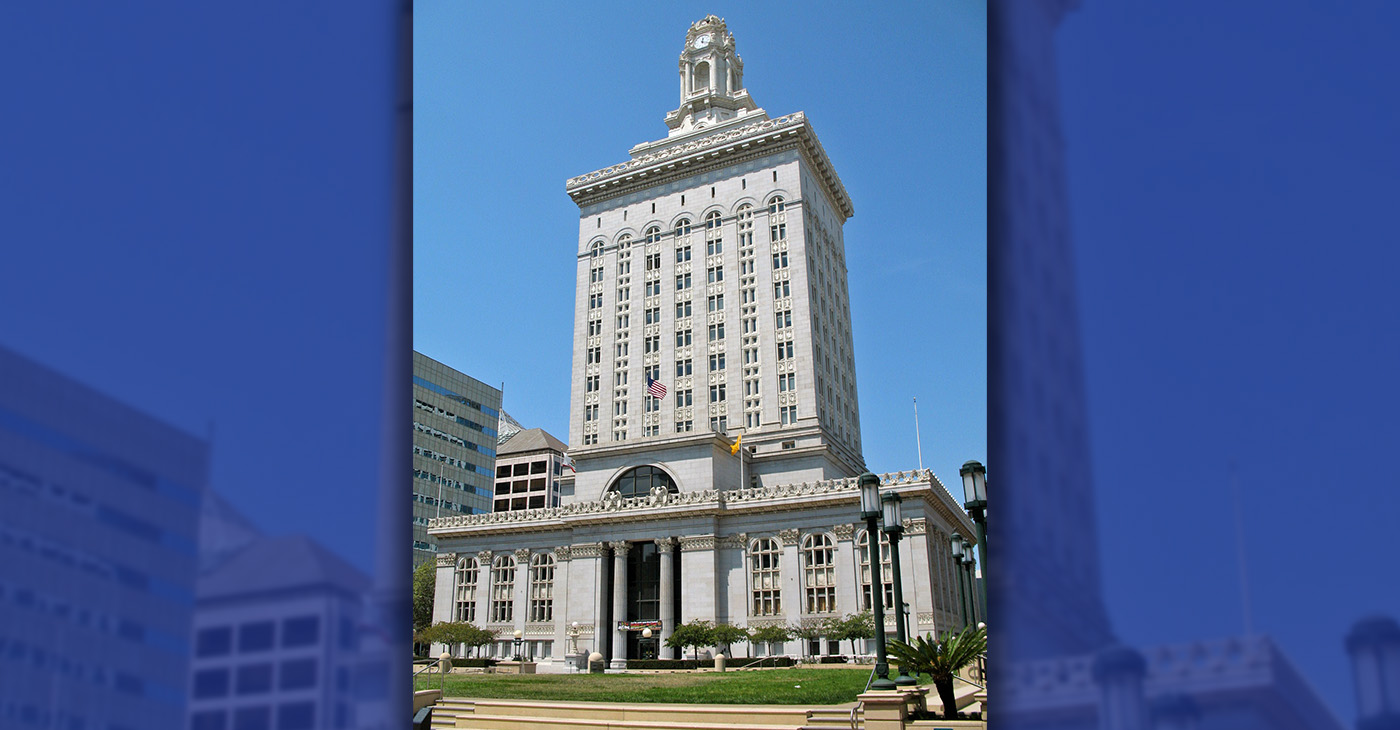
By Post Staff
The City Oakland is requiring all employees to return to the office, thereby ending the telecommuting policy established during the pandemic that has left some City Hall departments understaffed.
City Administrator Jestin Johnson recently told city unions that he is ending Oakland’s telecommuting program. The new policy will require employees to come to work at least four days a week.
These new regulations go into effect on Feb. 18 for non-union department heads, assistant and deputy directors, managers, and supervisors. All other employees must be back at work by April 7.
The administration may still grant the right to work remotely on a case-by-case basis.
In his memo to city unions, Johnson said former President Joe Biden had declared an end to the pandemic in September 2022, and that since then, “We have collectively moved into newer, safer health conditions.”
Johnson said “multiple departments” already have all their staff back in the office or workplace.
The City’s COVID-era policy, enacted in September 2021, was designed to reduce the spread of the debilitating and potentially fatal virus.
Many cities and companies across the country are now ending their pandemic-related remote work policies. Locally, mayoral candidate Loren Taylor in a press conference made the policy a central issue in his campaign for mayor.
City Hall reopened for in-person meetings two years ago, and the city’s decision to end remote work occurred before Taylor’s press conference.
At an endorsement meeting last Saturday of the John George Democratic Club, mayoral candidate Barbara Lee said she agreed that city workers should return to the job.
At the same time, she said, the city should allow employees time to readjust their lives, which were disrupted by the pandemic, and should recognize individual needs, taking care to maintain staff morale.
The John George club endorsed Lee for Mayor and Charlene Wang for City Council representative for District 2. The club also voted to take no position on the sales tax measure that will be on the April 15 ballot.
Bay Area
Authorities Warn: There’s a COVID Surge in California
According to data estimates by the Centers for Disease Control and Prevention (CDC), the coronavirus in California’s wastewater has spiked for eight consecutive weeks. Hospitalizations and emergency room visits have also increased since the rise of the new subvariants. Over the last month, Los Angeles County experienced an average of 389 hospital patients per day that tested positive for the coronavirus. The FLiRT subvariants such as KP.3.1.1. Made up over 2% of coronavirus samples nationwide, an increase of more than 7% last month.
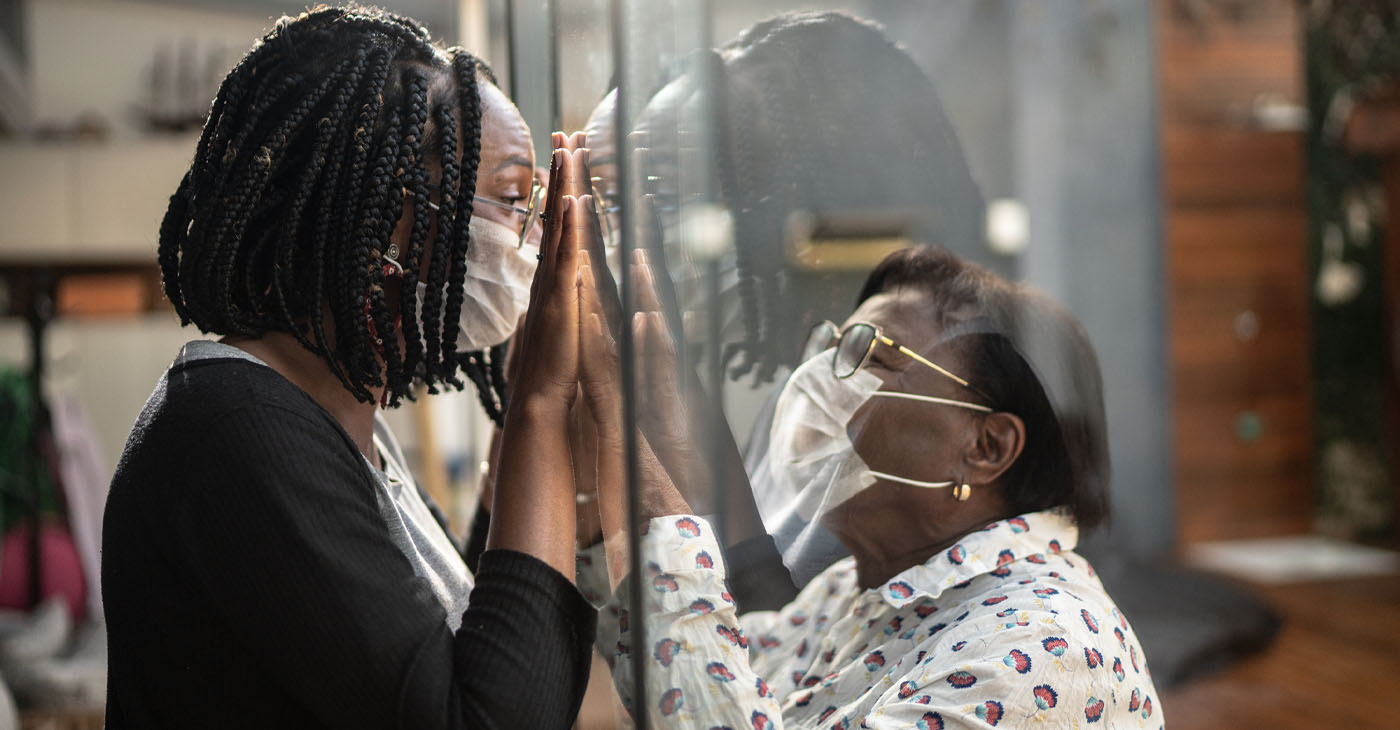
By Bo Tefu, California Black Media
California is experiencing a COVID-19 surge this summer, experts warn, as numbers of infections increased for the third month this year.
State public health authorities attribute the summer COVID surge to more infectious subvariants that have emerged as the coronavirus evolves.
Dr. Elizabeth Hudson, regional chief of infectious disease at Kaiser Permanente Southern California, stated that subvariants of COVID-19 called FLiRT increased in recent months, particularly one named KP.3.1.1 that has become the most common strain in the country.
Dr. Peter Chin-Hong, an infectious diseases expert at UC San Francisco, said that the subvariant KP.3.1.1 seems most adept at transmission.
“The subvariant is the one that people think will continue to take over, not only in the United States, but … around the world,” Chin-Hong said.
According to data estimates by the Centers for Disease Control and Prevention (CDC), the coronavirus in California’s wastewater has spiked for eight consecutive weeks. Hospitalizations and emergency room visits have also increased since the rise of the new subvariants. Over the last month, Los Angeles County experienced an average of 389 hospital patients per day that tested positive for the coronavirus. The FLiRT subvariants such as KP.3.1.1. Made up over 2% of coronavirus samples nationwide, an increase of more than 7% last month.
The majority of the people who tested positive for COVID-19 complained of a sore throat and a heavy cough. Risk factors that can increase the illness include age, underlying health issues, and vaccine dosage.
Health experts stated that the demand for the COVID-19 vaccine has increased in Northern California. However, people are having a hard time getting the vaccine due to the increasing number of cases.
California Black Media
Gov. Newsom and Gov. DeSantis Go Head-to-Head in Nationally Televised Debate
Conservative Fox News personality Sean Hannity moderated the duel, during which the TV pundit, more than once, injected his opinion, and appeared to be providing subtle assists to DeSantis. As the debate progressed, it was clear that opinions about each topic discussed was representative of the philosophical and political chasm that divides liberal and conservative America, and a preview of campaign mudslinging that is bound to intensify as the 2024 presidential campaign ensues.
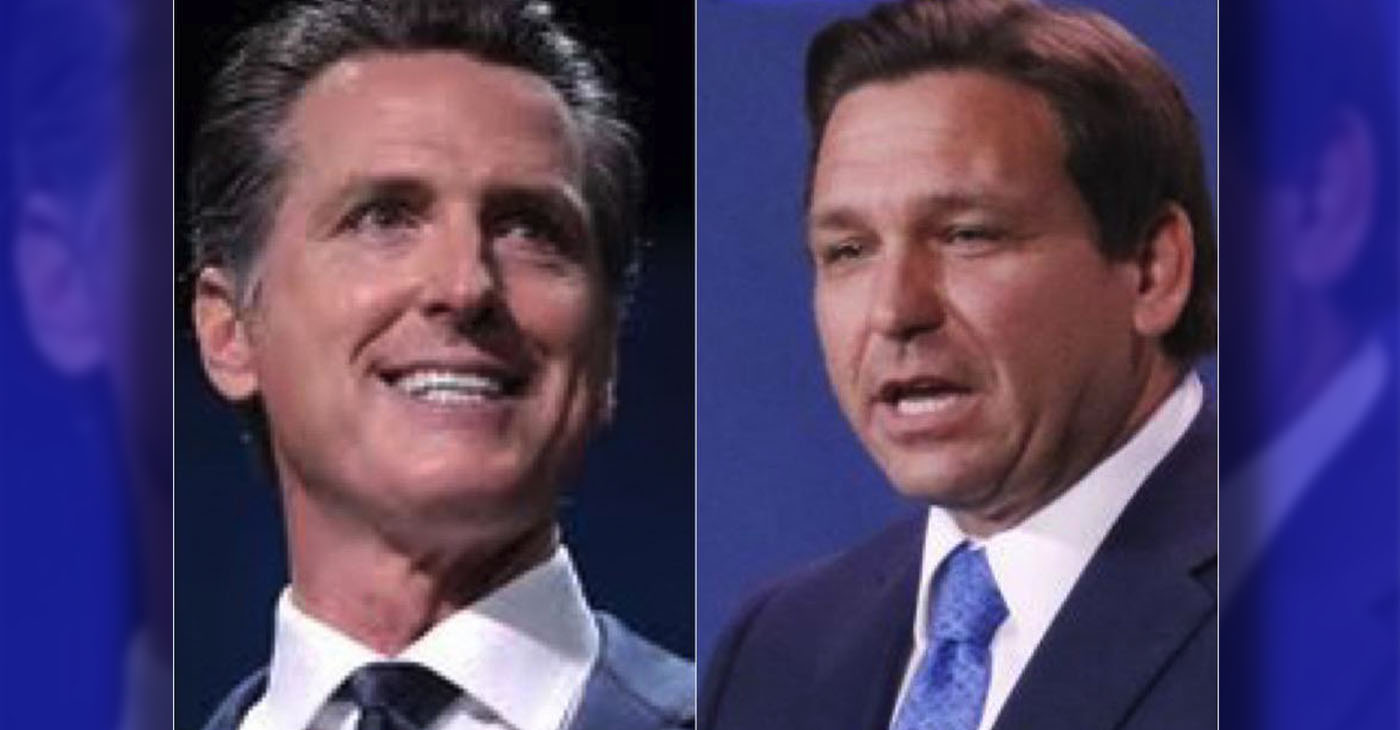
By California Black Media
In an intense, 95-minute-plus televised faceoff between California Gov. Gavin Newsom and Florida Gov. Ron DeSantis on Nov. 30, the men traded jabs and putdowns, defended their respective gubernatorial records, disagreed sharply on how to solve the country’s most pressing problems, and expressed clashing views on the performance of the Biden-Harris administration.
Conservative Fox News personality Sean Hannity moderated the duel, during which the TV pundit, more than once, injected his opinion, and appeared to be providing subtle assists to DeSantis.
As the debate progressed, it was clear that opinions about each topic discussed was representative of the philosophical and political chasm that divides liberal and conservative America, and a preview of campaign mudslinging that is bound to intensify as the 2024 presidential campaign ensues.
“I’ll tell you why I’m here,” Newsom said. “I’m here to tell the truth about the Biden-Harris record and also compare and contrast Ron DeSantis’ record and the Republican Party’s record” with that of California.
DeSantis blasted Newsom’s management of the COVID-19 crisis and criticized Newsom for prevalent crime, homelessness and deteriorating social conditions in California cities.
“You have the freedom to defecate in public in California,” DeSantis said. “You have the freedom to pitch a tent on Sunset Boulevard. You have the freedom to create a homeless encampment under a freeway and even light it on fire. They’re not the freedoms our founding fathers envisioned.”
Newsom took a jab at DeSantis’ presidential candidacy, predicting that the Florida Governor would be endorsing GOP frontrunner Donald Trump soon.
“There’s one thing we have in common,” Newsom said. “Neither of us will be the nominee for our party in 2024.
-

 Activism3 weeks ago
Activism3 weeks agoWe Fought on Opposite Sides of the Sheng Thao Recall. Here’s Why We’re Uniting Behind Barbara Lee for Oakland Mayor
-

 Activism4 weeks ago
Activism4 weeks agoSan Francisco Is Investing Millions to Address Food Insecurity. Is Oakland Doing the Same?
-

 #NNPA BlackPress3 weeks ago
#NNPA BlackPress3 weeks agoRev. Dr. Jamal Bryant’s Black Church Target Boycott Mobilizes 150,000
-

 Activism3 weeks ago
Activism3 weeks agoFaith Leaders Back Barbara Lee for Mayor, Criticize Candidate Loren Taylor for Dishonest Campaigning
-

 Activism4 weeks ago
Activism4 weeks agoOakland Post: Week of March 12 – 18, 2025
-

 #NNPA BlackPress3 weeks ago
#NNPA BlackPress3 weeks agoRecently Approved Budget Plan Favors Wealthy, Slashes Aid to Low-Income Americans
-

 Activism3 weeks ago
Activism3 weeks agoGroup Takes First Steps to Recall District Attorney Diana Becton
-

 Activism3 weeks ago
Activism3 weeks agoSen. Lola Smallwood-Cuevas Honors California Women in Construction with State Proclamation, Policy Ideas



